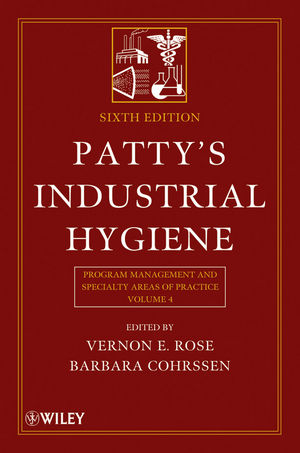In 2018, the Toledo Museum of Art (TMA) created the Center of Visual Expertise (COVE), which is dedicated to the application of Visual Literacy for industrial and service operations with an emphasis on safety. COVE leverages TMA’s renowned art collection and staff expertise to help teach close looking skills, create awareness of personal bias and enhance communication skills.
Doug Pontsler, the chairman and managing director of COVE, received the National Safety Council’s Distinguished Service to Safety Award on Sept. 9, 2019, in San Diego, California. First presented in 1942 to recognize advancements in worker safety during World War II, the Distinguished Service to Safety Award recognizes outstanding service and contributions to the field of safety. It is the most prestigious award given to individuals by the National Safety Council.
“On behalf of the dedicated and skilled staff of COVE, and our partners at TMA, I am honored to receive this award,” said Pontsler. “Improving our ability to see, interpret and act on what we see are vital skills for workers in all industries, and we are proud to advance this innovative approach to improving the safety and performance in organizations of all sizes.”
Pontsler was previously vice president of operations sustainability and environmental, health and safety (EHS) for Owens Corning, the first major organization to embrace Visual Literacy and work closely with TMA to incorporate its concepts into company safety practices. Since then, TMA has gained traction in the environmental, health and safety (EHS) sector with its Visual Literacy curriculum, and seeks to broaden its training in healthcare, agricultural and/or industrial manufacturing spaces.
“We are thrilled for Doug and the COVE staff to receive this well-deserved honor,” said John Stanley, interim director of TMA. “Visual Literacy is an important part of TMA’s commitment to art education, and COVE is bringing it to corporations, helping them improve safety and reduce accidents, an important service to the community of Toledo and beyond.”
“To be recognized with a National Safety Council Award is validation of the hard work by many in the name of safety both inside and outside the organizational setting. Those dedicated to safety as a profession are passionate advocates for improvement and are skilled leaders and listeners. It is our hope that recognition of excellence in safety will not only encourage other companies to emulate what works, but provide a benchmark and inspiration for what is possible,” said Amy K. Harper, Ph.D., CSP, SMS, director of workplace strategy & consulting operations, National Safety Council.
About Visual Literacy
Since its founding in 1901, the Toledo Museum of Art has been dedicated to art education and has consistently offered an extensive range of innovative programs and curriculum for visitors of all ages. One of TMA’s major initiatives, adopted formally in 2011 as part of its strategic plan, is to teach Visual Literacy and to make Visual Literacy training available and accessible, using its renowned collection as a teaching tool. TMA defines Visual Literacy as the ability to read, comprehend and write visual language.
“In an increasingly digital world we’re communicating more with images and less with words. Images are superseding words as our primary form of communication,” said Mike Deetsch, director of education and engagement at TMA. “Being fluent in the language of images gives us an advantage at school, at work and at home. Leading researchers, educators, museum professionals, filmmakers and artists believe that being fluent in visual language can improve one’s creativity, critical thinking, educational achievement, empathy towards others and the ability to decipher technology.”
To learn more about COVE, visit covectr.com. To learn more about Visual Literacy at TMA, visit toledomuseum.org/education/visual-literacy. More information about the National Safety Council Awards can be found at nsc.org/awards.
The National Safety Council (nsc.org) is a nonprofit organization whose mission is to eliminate preventable deaths at work, in homes and communities, and on the road through leadership, research, education and advocacy. Founded in 1913 and chartered by Congress, NSC advances this mission by partnering with businesses, government agencies, elected officials and the public in areas where we can make the most impact.
The Toledo Museum of Art is a nonprofit arts institution funded through individual donations, foundation grants, corporate sponsorships and investments. The Ohio Arts Council helps fund programs at the Toledo Museum of Art through a sustainability grant program that encourages economic growth, educational excellence and cultural enrichment for all Ohioans. Glass Pavilion® and Toledo Museum of Art Glass Pavilion® are registered service marks.
Admission to the Museum is free. The Museum is open Tuesday and Wednesday, 10 a.m. to 4 p.m.; Thursday and Friday, 10 a.m. to 9 p.m.; Saturday, 10 a.m. to 5 p.m.; Sunday, Noon to 5 p.m.; and is closed Monday and major holidays. Thursday evening hours are sponsored by Huntington Private Client Group.
The Museum is located at 2445 Monroe Street at Scottwood Avenue, just west of the downtown business district and one block off I-75 with exit designations posted. For general information, visitors can call 419-255-8000 or 800-644-6862, or visit toledomuseum.org.





